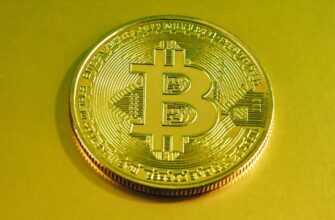## What is an ETH Airdrop?
An ETH airdrop is a marketing strategy where blockchain projects distribute free cryptocurrency tokens or coins to wallet addresses, typically on the Ethereum network. These are often used to bootstrap communities, reward early adopters, or decentralize token ownership. For beginners, airdrops represent a zero-cost entry point into the crypto ecosystem—but they require preparation and caution.
## Why Do Projects Offer Airdrops?
Projects use airdrops to:
– **Boost adoption**: Attract users to new platforms.
– **Reward loyalty**: Incentivize early testers or token holders.
– **Decentralize governance**: Distribute tokens to avoid concentration.
– **Generate buzz**: Create social media momentum before launches.
## Step-by-Step Guide to Getting ETH Airdrops
Follow these beginner-friendly steps to participate:
1. **Set Up an Ethereum Wallet**:
– Download a non-custodial wallet like MetaMask or Trust Wallet.
– Securely store your 12-24 word recovery phrase offline.
– Never share private keys or recovery phrases with anyone.
2. **Fund Your Wallet**:
– Purchase ETH from exchanges like Coinbase or Binance.
– Transfer a small amount (0.05-0.1 ETH) to cover transaction fees (gas).
3. **Find Legitimate Airdrops**:
– Use aggregators like Airdrops.io, DappRadar, or CoinMarketCap’s airdrop section.
– Follow official project Twitter/Discord channels—avoid random DM offers.
4. **Complete Required Tasks**:
– Common tasks include:
* Following social media accounts
* Joining Telegram groups
* Testing beta dApps (decentralized apps)
* Holding specific tokens (e.g., ETH or project tokens)
5. **Claim Your Tokens**:
– Connect your wallet to the project’s claim portal when the airdrop launches.
– Pay gas fees to process the transaction—verify amounts to avoid scams.
## Essential Tools and Wallets
– **Wallets**: MetaMask (browser/mobile), Trust Wallet (mobile), Ledger (hardware for security).
– **Trackers**: Zapper.fi or Zerion to monitor token balances.
– **Gas Fee Tools**: Etherscan’s Gas Tracker to time low-fee transactions.
– **Community Hubs**: Discord and Twitter for real-time updates.
## Tips to Maximize Success
– **Stay Organized**: Use a spreadsheet to track tasks and deadlines.
– **Prioritize Quality**: Focus on projects with strong fundamentals (e.g., active GitHub, audits).
– **Engage Authentically**: Participate in governance or testing—projects often reward genuine users.
– **Diversify**: Join multiple airdrops to increase opportunities.
## Risks and Precautions
– **Scams**: Fake airdrops may steal funds. Red flags include:
* Requests for private keys
* “Urgent” deadlines
* Unverified links
– **Tax Implications**: Airdrops are taxable income in many countries.
– **Gas Fees**: Failed transactions still cost ETH—double-check details.
– **Wallet Security**: Use dedicated airdrop wallets with minimal funds.
## Frequently Asked Questions (FAQ)
**Q: Are ETH airdrops really free?**
A: Yes—but you’ll pay Ethereum gas fees to claim tokens (usually $2-$20). Never pay “participation fees.”
**Q: How long does it take to receive tokens?**
A: Varies by project. Some distribute instantly; others take weeks/months after token launches.
**Q: Can I get multiple airdrops with one wallet?**
A: Absolutely. Use a single wallet for efficiency—but ensure it’s secure.
**Q: Do I need KYC for airdrops?**
A: Rarely. Most are permissionless. Avoid any demanding ID verification.
**Q: What’s the biggest mistake beginners make?**
A: Falling for phishing sites. Always check URLs and never connect wallets to unverified platforms.
**Q: Can I sell airdropped tokens immediately?**
A: Often yes, but research first—some tokens gain value over time. Use DEXs like Uniswap.
**Final Tip**: Treat airdrops as learning opportunities, not get-rich-quick schemes. Stay patient, prioritize security, and you’ll build valuable crypto experience!








